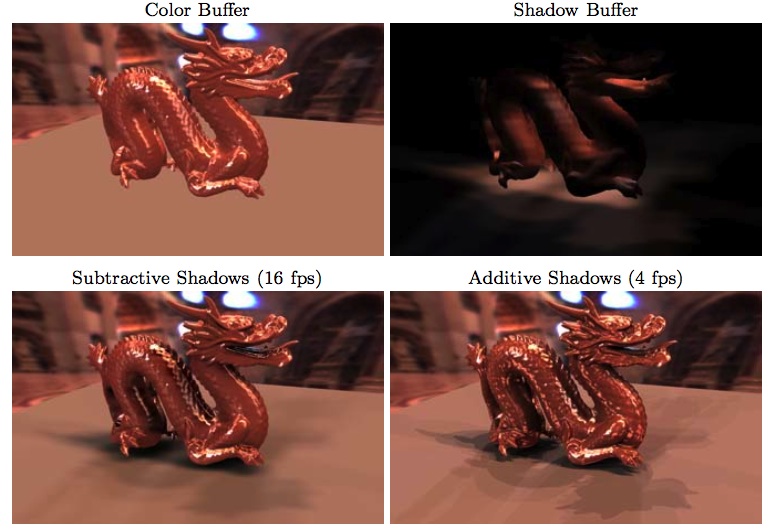Subtractive Shadows: A Flexible Framework for Shadow Level of Detail
Journal of Graphics Tools, April 2008

Abstract
We explore the implications of reversing the process of shadow computation
for real-time applications that model complex reflectance and lighting (such
as that specified by an environment map). Instead of adding illumination contributions
at each pixel across various lights, we compute the complete, unshadowed
local illumination at each pixel using approximations, then subtract the lighting
contribution from each light for which the pixel is in shadow. This provides flexible
level of detail for shadow computation in ways that standard additive shadows do
not, such as permitting the use of fast methods for accurate direct illumination combined
with a small number of shadow-casting lights, and allowing for downsampled
shadows to reduce fill cost. This technique preserves that portion of the scene with
the greatest visual importance—the direct illumination—and allows shadows to be
presented with lower fidelity in exchange for improvements in speed. With subtractive
shadows, we are able to interactively manipulate and render arbitrary BRDFs
and environment maps applied to complex, dynamic scenes with shadows, achieving
in real time effects that previously required offline computation or preprocessing.
Paper
- Journal Publication
- This work was also published as Technical report TR-781-07
- Demo Video
Citation
Christopher DeCoro and Szymon Rusinkiewicz.
"Subtractive Shadows: A Flexible Framework for Shadow Level of Detail."
Journal of Graphics Tools 13(1):45-56, April 2008.
BibTeX
@article{DeCoro:2008:SSA,
author = "Christopher DeCoro and Szymon Rusinkiewicz",
title = "{Subtractive Shadows}: A Flexible Framework for Shadow Level of Detail",
journal = "Journal of Graphics Tools",
year = "2008",
month = apr,
volume = "13",
number = "1",
pages = "45--56"
}